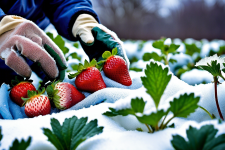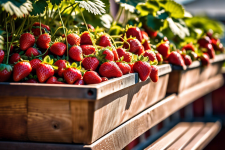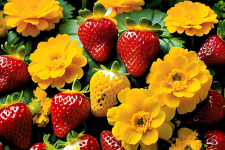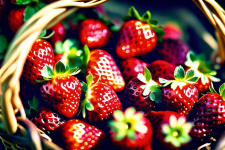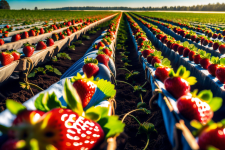Strawberries are delicious, vibrant fruits that are loved by many. Whether you are a seasoned gardener or a beginner, mastering the art of watering and irrigation is crucial for the success of your strawberry plants. Providing the right amount of water at the right time is essential for their growth, yield, and overall health. In this article, we will share some essential tips to help you effectively water and irrigate your strawberry plants.
1. Understanding Watering Needs
When it comes to strawberries, they have specific watering needs. Understanding these needs is the first step towards successful watering. Strawberry plants require consistent moisture, especially during flowering and fruiting stages. However, they are also sensitive to overwatering, as it can lead to root rot and other diseases. Therefore, it is imperative to strike a balance and ensure proper hydration without drowning the plants.
One way to ensure your strawberry plants receive adequate water is by checking the soil moisture regularly. Inserting your finger one or two inches into the soil will give you a good idea of its moisture content. If it feels dry at this depth, it’s time to water. On the other hand, if the soil is moist or still wet, it’s better to hold off watering until it dries out a bit. Additionally, consider the weather conditions and adjust your watering schedule accordingly. During hot and dry periods, your strawberries may require more frequent watering, while in cooler and rainier weather, you can reduce watering frequency.
Remember, it’s better to water deeply and less frequently rather than shallowly and frequently. Deep watering encourages the plants to grow deep and strong roots, which results in healthier and more productive strawberry plants.
2. Choosing the Right Irrigation Method
There are several irrigation methods to choose from when it comes to watering your strawberry plants. Each method has its pros and cons, and selecting the right one depends on your garden setup, availability of resources, and personal preference.
Drip irrigation is a popular and efficient method for watering strawberries. It involves placing hoses or tubes with small holes near the plants’ root zone, allowing water to slowly drip directly onto the soil. Drip irrigation minimizes water waste by delivering water directly to the plants’ roots, reducing evaporation and keeping foliage dry, which helps prevent diseases.
Sprinkler irrigation is another widely used method, especially for larger strawberry patches. This method involves overhead sprinklers that distribute water in a fine mist or spray. While it covers a larger area efficiently, it may lead to foliage wetting, which can encourage diseases if not managed properly.
Regardless of the irrigation method you choose, always remember to water strawberries in the morning. This gives the leaves time to dry out during the day, preventing the development of fungal diseases.
3. Additional Tips and Considerations
Aside from understanding watering needs and selecting the right irrigation method, there are a few additional tips and considerations to keep in mind when watering and irrigating your strawberry plants:
- Use mulch: Applying a layer of organic mulch, such as straw or wood chips, around your strawberry plants can help retain soil moisture, prevent weed growth, and regulate soil temperature.
- Avoid overhead watering during fruiting: Once your strawberry plants start producing fruit, try to avoid overhead watering as much as possible. Directly wetting the fruit can lead to rotting and spoiling.
- Monitor drainage: Ensure your planting area has proper drainage to prevent waterlogged soil. If your soil tends to become waterlogged, consider growing strawberries in raised beds or containers for better control over moisture levels.
By following these essential tips for watering and irrigating your strawberry plants, you will create optimal growing conditions for your beloved fruits. Remember that observing your plants and adapting your watering practices based on their specific needs is key to achieving healthy, juicy strawberries that will delight your taste buds. Happy growing!
Related Article: How to Properly Fertilize Strawberry Plants for Maximum Yield



